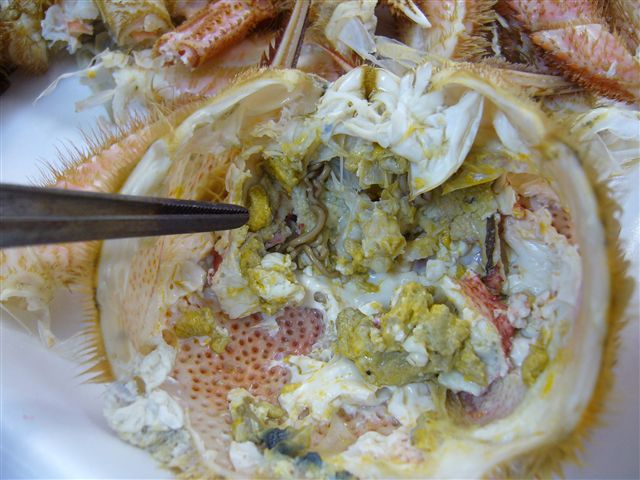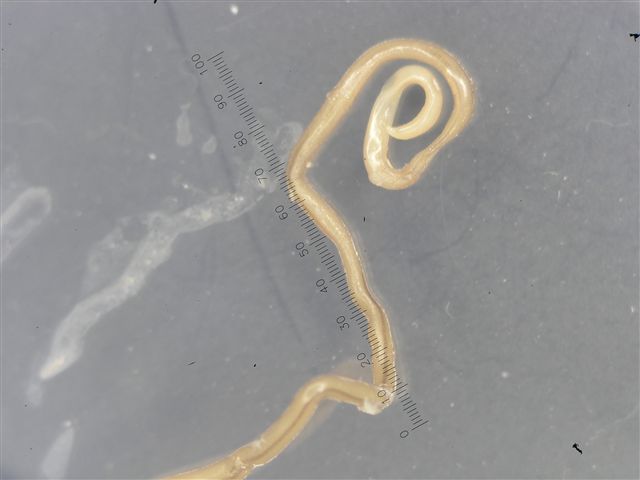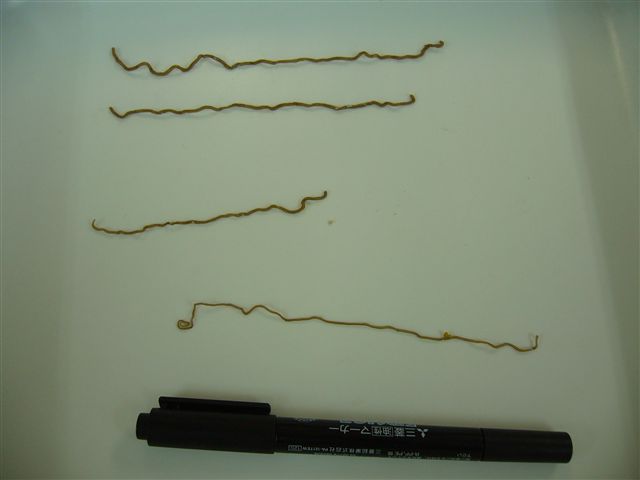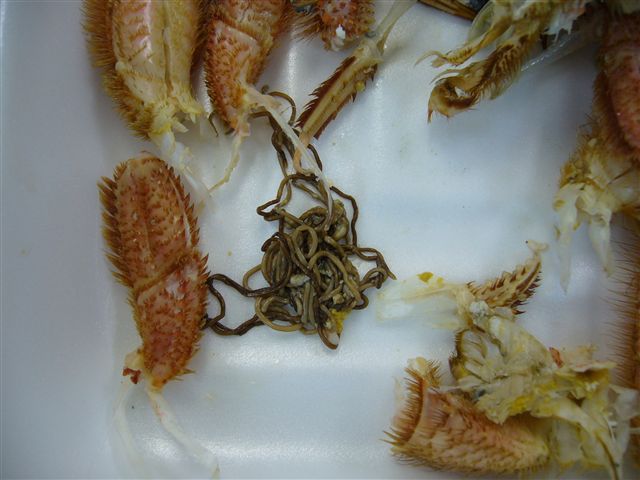

| Parasite | Nectonema sp. |
|---|---|
| Taxonomy | Nematomorpha, Nectonematoidea |
| Host | Hair crab (Erimacrus isenbeckii) |
| Infection site | Body cavity |
| Clinical sign | Affected crab exhibits no external abnormality. The parasite curls up in the body cavity under the carapace (Fig. 1). |
| Parasitology | The body is ca. 1.0-1.5 mm in diameter and ca. 150 mm in length (Fig. 2 and 3). Larvae of Nectonematoidea parasitize crabs and shrimps, and adults are free-living. |
| Pathology | For Nectonema zealandica, a similar parasite parasitizing purple rock crab in New Zealand, no pathological effects were noted (Poinar and Brockerhoff, 2001). |
| Health hazard | Since this parasite is not infectious to human, it is harmless in food hygiene. |
| Diagnosis | Check the parasite in the body cavity under the carapace. |
| Other information | This parasite was found in the living hair crab at the market. It would be the same species as the one reported from the hair crab caught in Kushiro (Oku et al., 1983). |
| References | Oku, Y., S. Fukumoto,
M. Ohbayashi and M. Koike (1983): A marine horse worm, Nectonema sp. parasitizing atelecyclid crab, Erimacrus isenbeckii, from Hokkaido, Japan. Jpn. J. Vet. Res., 31, 65-69.
Poinar, G. and A. M. Brockerhoff (2001): Nectonema zealandica n. sp. (Nematomorpha: Nectonematoidea) parasitizing the purple rock crab Hemigrapsus edwardsi (Brachyura: Decapoda) in New Zealand, with notes on the prevalence of infection and host defence reactions. Syst. Parasitol., 50, 149-157. |
(Photos by C. Satoh)
Fig. 3. A microscopic photograph of a Nectonema.

Fig. 2. Nectonema sp. from the hair crab


Fig. 1. Nectonema found in a boiled hair crab.